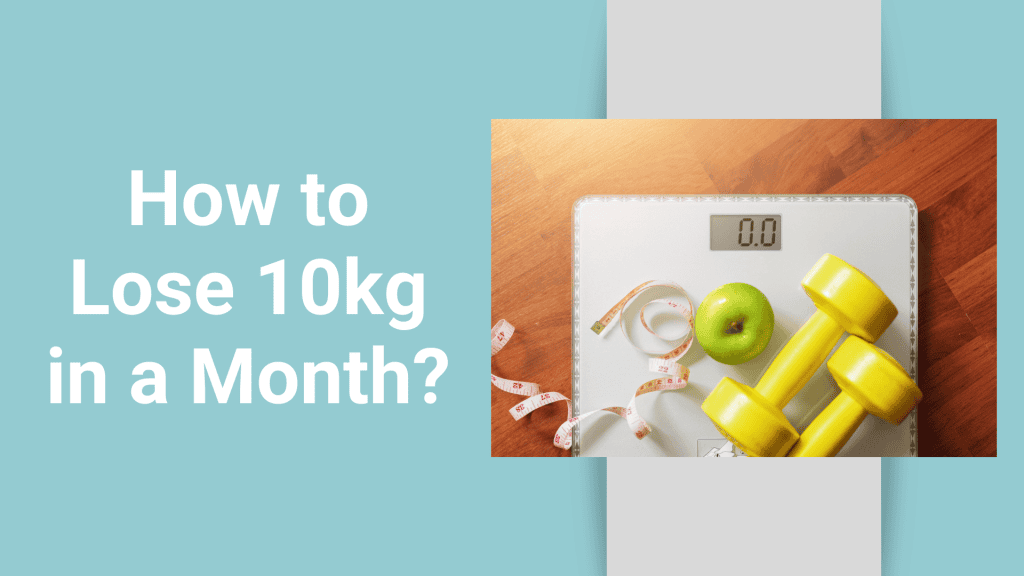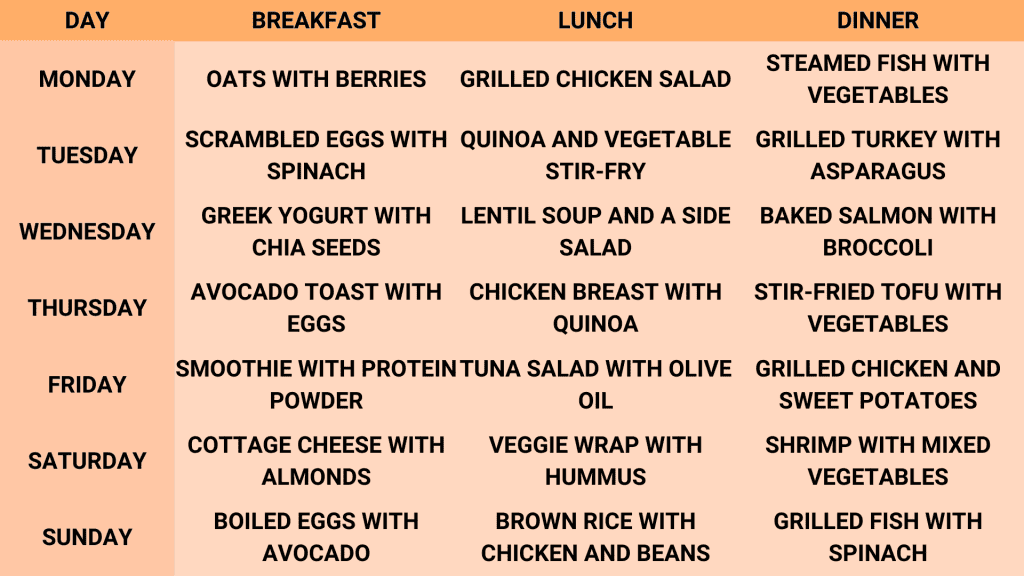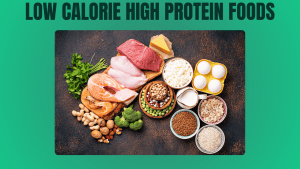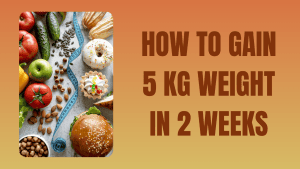To Lose 10 kg in 1 month requires a disciplined approach that combines diet, exercise, hydration, and proper sleep, which also demands consistency and careful planning to ensure that the body remains nourished while losing excess weight. Reducing daily caloric intake, boosting physical activity, and maintaining a protein-rich diet are essential to prevent muscle loss and improve metabolism. High-intensity interval training (HIIT), regular hydration, and enough rest can accelerate fat loss, making the goal achievable. It’s important to note that while this is possible, the methods must prioritize health and well-being.
Can I Lose 10 kg in 1 Month?
Losing 10 kg in 1 month is challenging and may be unsafe for everyone because such rapid weight loss requires sticking to strict dietary and exercise routines. Health experts recommend a sustainable weight loss rate of 0.5 to 1 kg per week, translating to 4 to 8 kg in a month. If not done carefully, attempting to lose 10 kg in one month may cause health problems such as muscle loss, fatigue, and nutrient deficiencies. A scientific and balanced approach is key to ensuring your health improves alongside weight loss. Always prioritize long-term sustainability and avoid quick fixes.
If you’re looking to lose 10 kg in 1 month, sticking to a healthy meal plan and consistent workouts is essential, especially if you Buy a Weight Loss diet plan.
10 Ways on How to Lose 10 kg in 1 Month
Losing 10 kg in a month is an ambitious goal that requires a carefully structured plan combining various lifestyle changes. A holistic approach encompassing dietary modifications, exercise routines, hydration, and sleep is essential to rapidly losing weight without compromising your health. Let’s explore ten proven methods to help you achieve this.
- Eat a Low-Carb Diet
- Reduce Calorie Intake to 1,000 per Day
- Increase Your Protein Intake
- Do HIIT Workouts (at least 1 hour per Day)
- Drink at least 2-3 Liters of Water per Day
- Control Portion Sizes
- Avoid Processed Foods and Sugary Beverages
- Lower Salt Intake
- Get 7-8 Hours of Sleep
- Try Intermittent Fasting
1. Eat a Low-Carb Diet
A low-carb diet is one of the most effective strategies for rapid weight loss, as it significantly reduces your intake of carbohydrates. The body enters a metabolic state called ketosis, where it burns stored fat for energy instead of glucose derived from carbs. Lowering carb intake also reduces insulin levels, a hormone responsible for storing fat. Studies have shown that low-carb diets not only lead to rapid fat loss but also suppress appetite, meaning you naturally consume fewer calories. Foods to focus on include low calorie foods, lean proteins, healthy fats (like avocado and nuts), and fibrous vegetables such as broccoli and spinach. Avoid starchy foods like bread, pasta, and sugary snacks, as they can lead to insulin spikes and derail fat-burning efforts.
2. Reduce Calorie Intake to 1,000 per Day
Achieving weight loss requires creating a caloric deficit, where you consume fewer calories than your body needs to maintain its current weight. One can learn how to lose 10 kg in 1 month without exercise if they aim for a substantial deficit, typically around 1,000 calories per day. However, this level of restriction should be carefully managed to ensure you still get enough essential nutrients. A highly restrictive calorie diet can be effective for rapid weight loss but comes with risks, such as muscle loss and nutrient deficiencies, if not done correctly. To minimize these risks, focus on nutrient-dense foods such as lean proteins (chicken, turkey), fiber-rich vegetables, and healthy fats while avoiding high-calorie processed foods and sugary snacks.
3. Increase Your Protein Intake
Increasing your protein intake is crucial when aiming for rapid weight loss, as it helps maintain muscle mass while you’re in a calorie deficit. Muscle is metabolically active tissue, meaning it burns more calories at rest than fat. Consuming more protein rich foods can boost your metabolism by as much as 80–100 calories per day due to the thermic effect of food (TEF), which is the amount of energy it takes to digest and metabolize food. Protein also plays a crucial role in satiety, helping you feel fuller for longer periods, thus reducing the likelihood of overeating. Excellent protein sources include lean meats, eggs, dairy, legumes, and plant-based options like tofu and tempeh. Aim to include a source of protein in every meal and snack throughout the day.
4. Do HIIT Workouts (at least 1 hour per Day)
High-Intensity Interval Training (HIIT) is one of the most time-efficient ways to burn fat quickly. HIIT involves alternating between periods of intense, fast-paced exercise and short recovery periods. This method elevates your heart rate, leading to a higher calorie burn during and after the workout due to the “afterburn effect” (excess post-exercise oxygen consumption). HIIT workouts, which can include sprints, jumping jacks, burpees, and kettlebell swings, are particularly effective because they engage multiple muscle groups simultaneously, helping you burn fat without losing muscle mass. Research has shown that just 20-30 minutes of HIIT can burn more calories than longer steady-state cardio sessions like jogging. To achieve significant fat loss in a short time, aim for at least 1 hour of HIIT daily, which can be broken into smaller, manageable sessions throughout the day.
5. Drink at Least 2-3 Liters of Water per Day
Hydration is a key component of weight loss, as it helps support metabolic processes and reduces water retention. Drinking 2-3 liters of water daily keeps you hydrated and helps flush out toxins and excess sodium that can cause bloating. Weight loss drinks can increase your metabolism, helping you burn more calories. Additionally, drinking water before meals has been shown to help with portion control, as it promotes a feeling of fullness, leading to reduced food intake. Staying properly hydrated is especially important during intense exercise routines like HIIT, as dehydration can lead to reduced performance and hinder fat-burning efforts.
6. Control Portion Sizes
Portion control is critical when trying to maintain a calorie deficit. Even healthy foods, if eaten in large quantities, can lead to overeating and stall your progress. Controlling portion sizes allows you to manage calorie intake more effectively. One practical approach is to use smaller plates and bowls to help naturally reduce the amount of food you consume. Additionally, paying attention to hunger cues and practicing mindful eating, focusing on each bite, and eating slowly can prevent overeating. A helpful trick is to divide your plate into sections, with half dedicated to vegetables, a quarter to lean protein, and a quarter to complex carbs or healthy fats. Measuring out portions, especially for high-calorie foods like nuts, oils, and seeds, ensures you stay on track with your caloric goals.
7. Avoid Processed Foods and Sugary Beverages
Processed foods are typically loaded with hidden sugars, unhealthy fats, and empty calories that can hinder weight loss. These foods are often designed to be hyper-palatable, making them easy to overeat. Sugary beverages like sodas, energy drinks, and packaged juices are particularly problematic because they provide a large number of calories without any satiety, leading to weight gain. Cutting out processed foods and sugary drinks significantly reduces your calorie intake while stabilizing your blood sugar levels. This stabilization prevents insulin spikes, which are linked to fat storage. Instead, focus on whole, unprocessed foods such as vegetables, fruits, lean proteins, and healthy fats to support fat loss and maintain energy levels.
8. Lower Salt Intake
Reducing salt intake helps minimize water retention, which can make a noticeable difference on the scale and in how your body looks. Consuming high levels of sodium causes the body to retain water, leading to bloating and masking fat loss progress. Lowering salt intake allows your body to shed excess water weight, which can make you appear leaner. Opt for fresh foods over processed options, as processed foods tend to be high in sodium. Season your meals with herbs and spices instead of salt to enhance flavor without the bloat-inducing effects.
9. Get 7-8 Hours of Sleep
Getting 7-8 hours of quality sleep per night helps regulate hunger hormones like ghrelin and leptin. Ghrelin signals hunger, while leptin signals fullness; when you are sleep-deprived, ghrelin levels increase, and leptin levels decrease, leading to overeating and cravings for high-calorie, sugary foods. Moreover, sleep is critical for muscle recovery, especially if you’re engaging in regular HIIT workouts. Without sufficient rest, your body can’t recover properly, which can lead to decreased workout performance and slower metabolism. Prioritize a consistent sleep schedule, reduce screen time before bed, and create a relaxing bedtime routine to ensure you get enough rest to support your weight loss efforts.
10. Try Intermittent Fasting
Intermittent fasting (IF) is a powerful tool for managing calorie intake and improving fat metabolism. IF involves cycling between periods of eating and fasting. The most popular method, the 16:8 protocol, involves fasting for 16 hours and eating during an 8-hour window. Fasting helps lower insulin levels and increases human growth hormone, promoting fat burning. Additionally, by limiting your eating time, IF naturally reduces your overall calorie intake without requiring strict dieting. Fasting also helps regulate hunger hormones and promotes cellular repair processes, which can enhance weight loss and overall health.
For those determined to discover how to lose 10 kg in 1 month, creating a personalized plan is key to staying on track.
Diet Plan to Lose 10 kg in 1 Month
To reach your goal, following a well-planned diet and balanced approach like the Sara Ali Khan diet plan can support your goal to lose 10 kg in 1 month while staying healthy. Below is a 7-day diet plan designed to help you shed 10 kg in one month.
Foods to Avoid When Losing 10 kg in 1 Month
Avoiding certain foods is critical when trying to lose weight quickly. Processed foods, sugary drinks, and high-sodium snacks can sabotage weight loss efforts. Processed foods contain added sugars and unhealthy fats, which can increase calorie intake without providing essential nutrients. Sugary drinks like soda and packaged fruit juices spike blood sugar levels, leading to increased fat storage. High-sodium foods cause water retention, masking fat loss and leading to bloating. Cutting out these foods can help your body shed fat more efficiently, keeping you on track to meet your goal.
1. Processed Snacks
Snacks like chips, candy, and packaged baked goods are high in refined sugars and unhealthy fats. Refined sugars lead to quick spikes in blood sugar, increasing hunger and cravings. Unhealthy fats can cause inflammation and make weight loss more difficult. These snacks also offer little nutritional value, making them a poor choice for your diet.
2. Sugary Drinks
Drinks such as soda, sweetened teas, and fruit juices are full of empty calories. They raise blood sugar levels rapidly, which can lead to fat gain. Additionally, they don’t fill you up, so you may end up eating more. Opt for water, herbal teas, or unsweetened beverages to stay hydrated and support your weight loss goals.
3. Refined Carbohydrates
White bread, pasta, and pastries are quickly converted into sugar in your body, leading to energy crashes and increased appetite. Whole grains are a better choice because they provide lasting energy and help keep hunger at bay. They digest slowly, which helps maintain stable blood sugar levels.
4. Fried foods
Fried foods like fries and doughnuts are high in unhealthy fats and calories. These fats slow digestion and can lead to weight gain. They also often contain trans fats, which can raise bad cholesterol levels. Choosing baked or grilled options instead can help reduce fat intake and support your weight loss efforts.
5. High-sodium foods
Foods like packaged soups, deli meats, and salted snacks can cause water retention, making you feel bloated and heavier. Excess sodium also affects blood pressure and fluid balance. Reducing sodium intake helps decrease bloating and supports more visible weight loss.
6. Alcohol
Alcohol is calorie-dense and can also lower your inhibitions, leading to poor food choices. It slows down fat metabolism, causing more fat to be stored. Cutting back or avoiding alcohol can help you stay within your calorie goals and improve your chances of losing weight.
Is Losing 10 kg in 1 Month Healthy?
No, losing 10 kg in one month can be extremely challenging and is often not the healthiest approach. Extreme weight loss can lead to muscle loss, nutrient deficiencies, and a slowed metabolism. Most experts agree that gradual weight loss is more sustainable and less harmful to your body. Quick-fix diets may offer short-term results but can lead to long-term health issues, including a higher chance of regaining weight. A slower, more sustainable approach allows your body to adapt and helps maintain muscle mass and essential nutrients.
The secret to how to lose 10 kg in 1 month can be reached by combining smart eating habits like 30 30 30 rule for weight loss with effective exercise routines.
How to Calculate Daily Calorie Intake to Lose 10 kg in 1 Month
To lose weight, a Daily calorie intake calculator is essential for measuring daily calorie intake. This involves understanding your Basal Metabolic Rate (BMR calculator) and adjusting based on activity levels. The BMR is the number of calories your body needs to maintain its current weight at rest. For instance, if a person’s BMR is 1,500 calories and they burn an extra 500 calories through exercise, they would need to consume around 1,000-1,200 calories per day to create a deficit. However, excessively lowering calorie intake can slow down your metabolism, making it harder to lose weight in the long run.
For those determined to lose 10 kg in one month, a Food calorie calculator can help you make smarter food choices.
How Quickly Can You Lose 10 kg?
The time frame to lose 10 kg can vary depending on individual factors such as diet, exercise, and metabolic rate. Losing 0.5 to 1 kg per week is considered healthy, meaning that it would take roughly 10 to 20 weeks, or 2.5 to 5 months, to lose 10 kg in a sustainable way. Trying to rush weight loss can lead to adverse effects like muscle loss or nutritional deficiencies, making it harder to maintain the weight loss in the future.
To understand how to lose 10 kg in 1 month, it’s important to stay consistent and track both your nutrition and workouts.
Expert Review on How to Lose 10 kg in 1 Month
According to Dr. Amit Kochar, a certified nutritionist, losing 10 kg in one month is achievable but requires a carefully planned approach. While it’s possible to lose weight quickly, it’s crucial to avoid extreme diets that could harm your health. A balanced nutrient intake, regular exercise, and sufficient sleep are essential for successful and sustainable weight loss. Dr. Amit advises maintaining hydration and incorporating strength training, which can help preserve muscle mass while shedding fat.
References
“Importance of Exercise: Benefits & Recommended Types.” n.d. Harvard Health. Accessed September 10, 2024. https://www.health.harvard.edu/topics/exercise-and-fitness.
Leidy, Heather. n.d. “Dietary protein and muscle in older persons.” PubMed. Accessed September 10, 2024. https://pubmed.ncbi.nlm.nih.gov/24310053/.
FAQs
1. How to lose 10kg in a month by fasting?
Instead of consuming three large meals, practice time-restricted eating. Choose an 8-10 hour window, such as 11 am to 7 pm, during which you can eat. Outside this period, fast by drinking water or no-calorie drinks.
2. How much to walk to lose 10 kgs?
Exercise is a key element of weight loss. Aim for at least 30 minutes of brisk walking or other cardio activities like swimming or cycling daily.
3. What does 10 kg weight loss look like?
If weight loss is too rapid, it can lead to muscle depletion, making you look gaunt. A gradual weight loss plan ensures you look toned and healthy while shedding fat.










